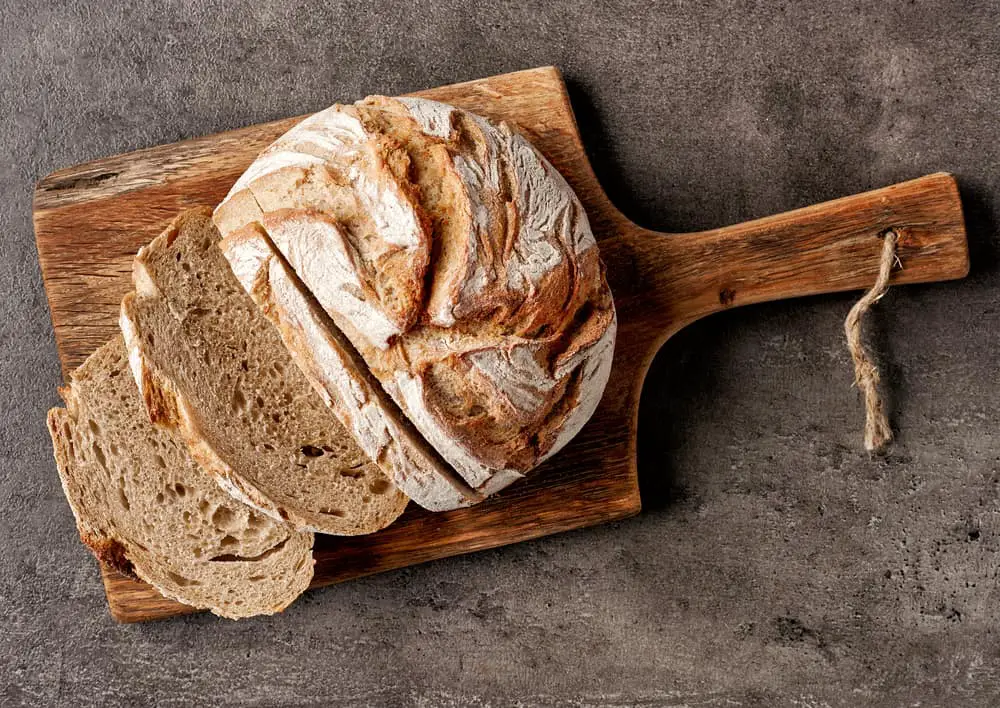Last Updated on 21st July 2023 by
Freshly baked bread has a distinctive aroma, texture, and taste to it. When it comes out of the oven piping hot and welcomes a little spread of butter- there is just nothing quite like it. I remember many mornings that I lingered in the kitchen just to be around the freshly baked bread.
Bread doesn’t stay soft and perfect forever, though. After a week or so the bread becomes stale. It’s been used a few times and it starts to harden and stiffen. It’s no longer the supple, pillowy bread that had just escaped from the oven ready to be eaten. Stale bread is uninviting and almost not edible.
Is there anything you can do with bread once it starts to stiffen and become stale? You’ve checked it for mould and found none, but it is definitely tougher, and when you press down on it, there isn’t a lot of give to it. This bread is on the verge of becoming inedible, and you wouldn’t cherish the thought of having it for a meal. You know it will give you a fight and be a tough meal to finish.
Table of Contents
I want to tell you how to soften stale bread and take it from tough and chewy to deliciously soft.
How to Soften Stale Bread in the Oven
You can use stale bread to make a few different kinds of dishes, like bread crumbs, bread pudding, croutons, and even French toast, if you are so inclined. You don’t always want the stale bread, though. Sometimes you want your bread to be soft and palatable and usable for a sandwich or as a plain slice of bread.
You can soften the bread by simply heating it in the oven. Do that by first preheating the oven to 300 degrees Fahrenheit. This low temperature will help to rehydrate the bread rather than drying it out too much and making it crispy.
Then, you want to run your loaf under water briefly. Just get the outside wet. You can also use a damp cloth and wet it down. Try not to let any cut parts get wet, but it’s not a big deal if they do.
Put your loaf onto a baking sheet and heat it for about 7 minutes to make it dry on the outside. This may take a few minutes longer for larger, wetter loaves of bread.
This works for a lot of different kinds of bread. You can use this method if you are wondering how to soften stale French bread, baguettes, white bread and more.
How to Soften Stale Bread in the Microwave
What do you do if you want to soften just a single slice of bread or a dinner roll? The method I gave you above using the oven isn’t really practical for that, and it’s too easy to dry out the bread this way. What I suggest is not wetting down the bread or preheating the oven at all. Instead, just use the microwave. Put your bread in for just about 10-15 seconds and heat it up.
This will soften the bread, but it has an unintended side effect. If you don’t eat the bread within about an hour, it will harden and become even tougher than before. The stale bread will get more stale, and that’s a problem.
So, if you want to heat up just a small amount of bread, I recommend the microwave for it. Just make sure you only heat up what you need and no more. Then, consume the bread within a short period of time before it has a chance to harden and become incredibly tough to eat.
Now that you know how to soften stale bread microwave-style, you don’t have to toss it out as soon as it starts to harden. You can keep it edible for longer and allow it to be used. Knowing these kinds of tricks for saving bread that’s going bad can keep you from wasting food and help your food supply to last longer.
Keep in mind that if the bread becomes mouldy, it needs to be tossed rather than eaten. You may feel like it’s safe to just cut off the mouldy part, but that’s not always a good idea. There is always more mould in the bread than what is visible, as the mould spores themselves are invisible to the naked eye. If the bread is mouldy on one end, there is more mould than that in the bread. For some people, the mould isn’t an issue and won’t make them ill or cause any health problems, but for others it can be very unhealthy.
What Causes Bread to Go Stale?
When bread dries out, it will go stale and start to harden. The lack of moisture causes toughness, which makes sense. However, a loaf of bread can become stale and hard even when the conditions are humid. How does that happen?
The starch and water molecules in the bread can start to rearrange themselves. This is called staling, and means that the sponginess of the bread is starting to disappear as the bread cools from being baked. The water on the inside of the bread starts to go out to the crust and then finally out to the air. Once the starch hardens again, the bread will get hard as well. If the bread is cold, then this process occurs faster, so don’t keep your bread in the fridge.
How to Keep Bread from Becoming Stale
Bread goes stale in time, and this is just an unfortunate truth when you have starchy foods involved. If you are going to eat your bread in a few days, you can keep it wrapped up in plastic wrap at room temperature. So, it can sit on your kitchen counter, and it will stay good for a few days this way. The plastic wrap prevents the air from getting inside and speeding up the staling process.
What do you do if you have multiple loaves of bread you want to store? You can keep the extra loaves of bread safe and fresh by storing them in the freezer. Yes, I said cold will cause the bread to stale faster, but freezing is a whole different story. It slows down the process, actually, rather than speeding it up, and that’s due to the extreme temperature.
How to store bread in the freezer properly so that it stays fresh? You should wrap it in two layers of plastic wrap, if possible, and keep it inside a freezer safe storage bag. It will keep for as long as three months in there.
FAQs
What are the methods to soften stale bread?
There are several ways to soften stale bread. One common method is to dampen the bread with water and then heat it in the oven at 300-350°F for about 10-12 minutes. Another method involves wrapping the bread in a damp cloth and microwaving it for 10 seconds. A third option is to use a steamer or a pot with a tight lid, placing the bread over the boiling water and letting the steam soften it.
Can I prevent bread from becoming stale in the first place? If so, how?
Yes, there are several ways to prevent bread from becoming stale. Store it in a cool, dry place and keep it wrapped in plastic, foil, or a breadbox. Don’t refrigerate bread, as this can actually cause it to stale faster. Freezing bread that you won’t use immediately can also prevent staleness. Thaw only what you’ll use within a day or two.
Is stale bread safe to eat, and can I use it in other recipes to prevent waste?
Stale bread is generally safe to eat but it might not taste as good as fresh bread. You can certainly use it in many recipes to prevent waste. It’s great for making breadcrumbs, croutons, bread pudding, French toast, and many other dishes. You can even use stale bread to thicken soups or sauces.
I'm Pauline, a mother of four grown children, my passion for cooking stemmed from the joy i get cooking for my family. I love to try new dishes, especially when dining out but creating and sharing my own recipes is my favourite thing to do!



operator
Friday 21st of February 2025
hEHrjdwrHRs